In a world where instant results are often expected, finding a quick weight loss meal plan that actually works—and is grounded in science—can feel like navigating a nutritional maze. Fortunately, the convergence of modern nutritional science and evidence-based dieting strategies offers a clear path for those seeking real, sustainable fat loss. Whether your goal is to shed pounds in time for an event or kickstart a long-term wellness journey, this guide explores how to structure a simple fat loss meal plan that supports rapid results without compromising health.
You may also like: Smart Meal Prep for Weight Loss: Expert-Approved Lunch Ideas and Recipes to Stay on Track
A Balanced Approach to Rapid Fat Loss
Contrary to popular diet culture, fast fat loss doesn’t have to mean extreme deprivation. Scientific evidence continues to reinforce that nutrient quality, portion control, and meal timing play far more pivotal roles than simply slashing calories. When built on whole-food principles and tailored to support metabolic efficiency, a fast weight loss meal plan can be both effective and sustainable.
One of the first steps to success involves understanding your personal energy requirements. Basal metabolic rate (BMR), activity level, and body composition all influence how many calories your body needs to maintain versus lose weight. By establishing a mild to moderate calorie deficit (typically 500–800 calories below maintenance), fat loss can be initiated without entering starvation mode or sacrificing lean muscle mass.
Moreover, choosing whole foods over highly processed alternatives enhances satiety and reduces insulin spikes, leading to more consistent energy and fewer cravings. Protein becomes especially critical during this phase, not only for muscle preservation but also for its thermic effect, which increases calorie burn during digestion.
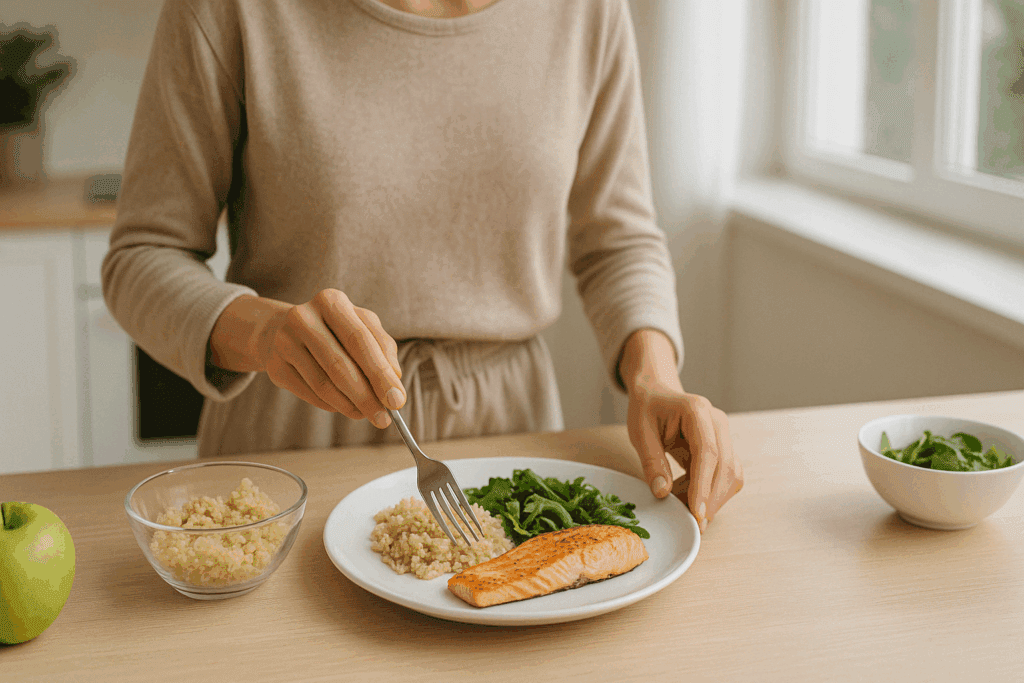
Understanding the Role of Macronutrients
Crafting a quick weight loss meal plan requires more than just calorie math. The ratio and quality of macronutrients—protein, carbohydrates, and fat—significantly impact how your body burns fat and retains muscle. Higher protein intake, generally 1.2 to 1.6 grams per kilogram of body weight, helps regulate appetite and supports recovery from exercise.
Carbohydrates, while often vilified, can be strategically incorporated to provide energy and stabilize blood sugar levels. The key lies in focusing on low-glycemic options such as sweet potatoes, oats, lentils, and non-starchy vegetables. These not only sustain energy but also contribute essential fiber for gut health and digestive regularity.
Dietary fat should not be neglected, as it plays an integral role in hormone regulation, nutrient absorption, and satiety. Prioritize unsaturated fats from sources like olive oil, avocados, nuts, and fatty fish. When thoughtfully balanced, these three macronutrients create the foundation of a simple fat loss meal plan that fuels the body efficiently.
How to Lose Weight Day by Day with Structured Meals
Daily consistency is often the difference between wishful thinking and measurable results. A successful 2 week weight loss plan or 30 day weight loss food plan hinges on well-structured meals spaced throughout the day to prevent energy crashes and curb late-night snacking.
Begin with a protein-forward breakfast such as Greek yogurt with berries and chia seeds or scrambled eggs with spinach and avocado. Midday meals should anchor your highest energy needs, making lunch a prime time for lean proteins like grilled chicken, legumes, or tofu paired with whole grains and a generous serving of greens.
Dinner can be lighter yet still satisfying—think baked salmon with roasted vegetables or a hearty vegetable stir-fry with quinoa. Optional snacks, such as a handful of almonds or hummus with raw vegetables, help maintain blood sugar stability and stave off hunger.
For those seeking an eating schedule to lose weight fast, aligning meals with circadian rhythms can enhance fat-burning potential. Eating within a 10- to 12-hour window and avoiding food close to bedtime can optimize insulin sensitivity and metabolic function.
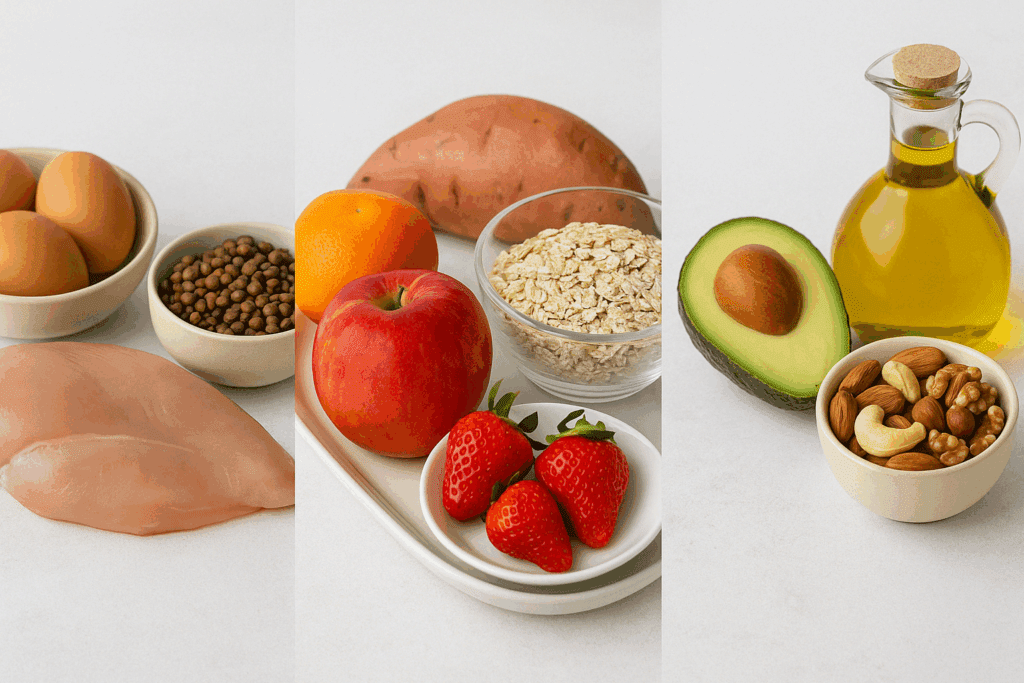
Meal Prep Plans for Losing Weight: The Secret to Consistency
One of the most common pitfalls in any diet program is a lack of preparation. When hunger strikes and healthy options aren’t readily available, it’s easy to resort to fast food or convenience snacks that derail progress. That’s where meal prep becomes a powerful tool.
Meal plan and prep for weight loss allows you to make intentional food choices ahead of time. Batch-cooking proteins, roasting vegetables, and pre-portioning healthy snacks can significantly reduce decision fatigue during the week. Investing a few hours once or twice weekly to plan and prepare meals minimizes last-minute compromises and boosts your chances of staying on track.
Meal prep plans for losing weight also ensure nutritional consistency. When you control what goes into your meals, it becomes easier to hit specific macronutrient targets and monitor caloric intake. For those following an exercise meal plan to lose weight, having post-workout meals prepped and ready can maximize recovery and lean muscle preservation.
Exploring Easy Diets to Follow That Actually Work
While many commercial diets promise quick results, they often lack flexibility, sustainability, or scientific backing. Easy diets to follow prioritize whole foods, realistic portion sizes, and behavioral simplicity. For example, the Mediterranean diet, with its emphasis on olive oil, vegetables, whole grains, and lean protein, aligns well with a quick weight loss meal plan while offering long-term cardiovascular benefits.
Similarly, the DASH (Dietary Approaches to Stop Hypertension) diet can be adapted for weight loss by emphasizing low-sodium, high-fiber meals with balanced macronutrients. These diets don’t require rigid rules but instead encourage mindful eating and gradual habit formation.
For those exploring faster outcomes, a ketogenic approach may come into play. However, the debate around the ketogenic diet vs low carb approaches continues to spark discussion in scientific circles. While both limit carbohydrate intake, the ketogenic model promotes a much lower threshold—typically under 50 grams of net carbs per day—to induce ketosis. This shift forces the body to burn fat as its primary fuel source, often accelerating weight loss.
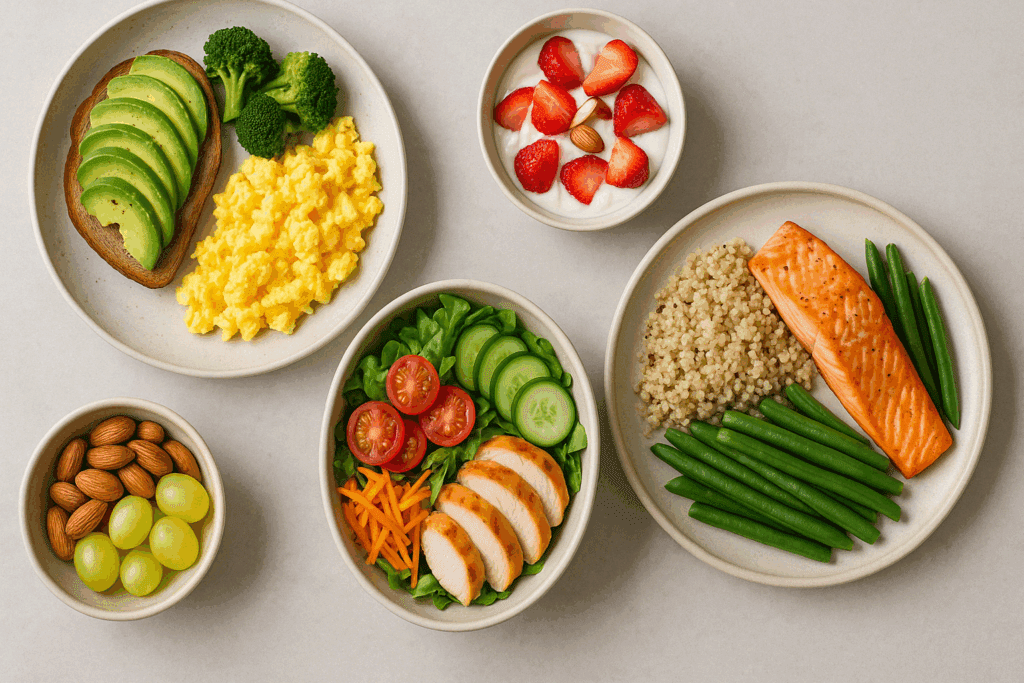
Low Carb vs Keto: What Works Best for You?
Determining the best strategy often depends on individual goals, body composition, and lifestyle preferences. The question “is keto a low carb diet” is common, and the answer is yes, but with a specific focus on ketosis. The broader category of low-carb diets may allow 75 to 150 grams of carbs daily, still low enough to reduce insulin levels and promote fat loss but without entering full ketosis.
When comparing the keto diet vs low carb diet models, the primary distinction lies in metabolic adaptation. Keto typically requires strict carb control, leading to rapid initial fat loss, but may come with side effects such as fatigue, irritability, or micronutrient deficiencies. Low-carb diets offer more dietary flexibility, which can enhance long-term adherence.
One must also consider whether a given protocol aligns with personal health goals. While ketogenic diets can be effective for managing blood sugar and hunger, questions such as “is keto a good diet” or “is a keto diet sustainable” must be answered in the context of lifestyle compatibility. Short-term results are compelling, but long-term success depends on whether the approach supports overall well-being and nutritional adequacy.
The Science Behind a 30 Day Meal Plan for Weight Loss
Setting a 30-day timeframe provides structure without being overly rigid. A 30 day meal plan for weight loss allows for both physical and psychological adaptation, helping the body adjust to new patterns of eating while providing visible progress. In fact, a weight loss 30 day diet plan can deliver 6 to 12 pounds of fat loss depending on initial body composition, compliance, and activity levels.
This timeframe also helps build critical skills, including portion awareness, nutrient balancing, and hunger recognition. Each week within the plan can introduce new elements—from increasing protein intake to experimenting with intermittent fasting—giving the process a sense of momentum.
A 30 day weight loss food plan doesn’t have to feel monotonous either. Rotating protein sources (chicken, fish, legumes, tofu), incorporating a rainbow of vegetables, and using global spices or healthy sauces can transform simple meals into flavorful experiences. The goal is not just to lose fat, but to cultivate eating habits that nourish long after the plan concludes.
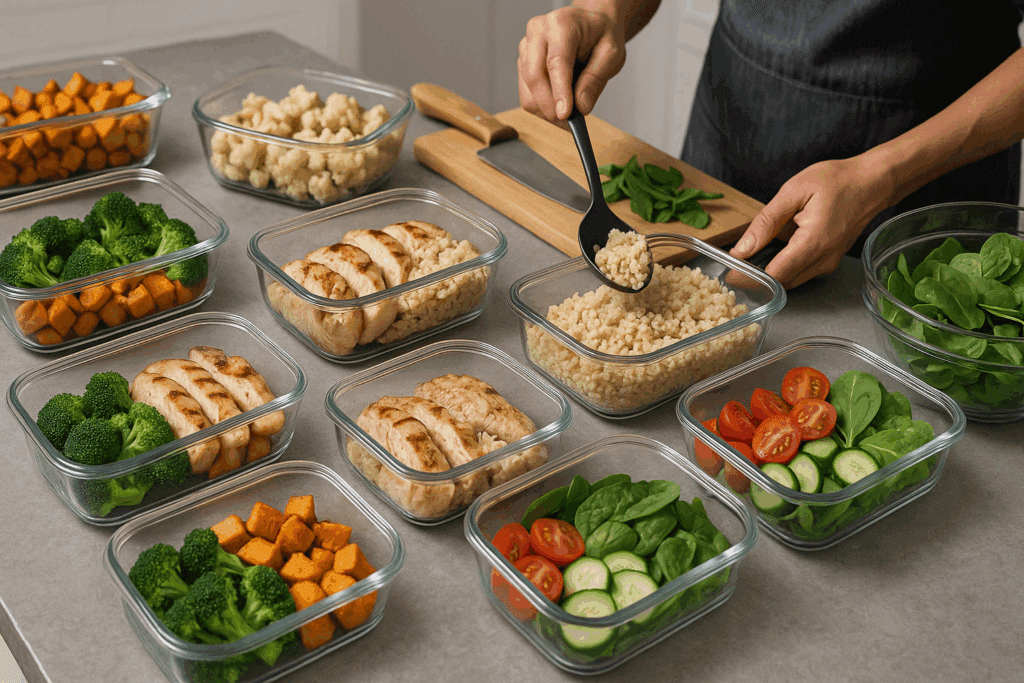
Tailoring a Diet Plan for Weight Loss for Male Metabolism
Men often have different metabolic needs due to higher muscle mass, testosterone levels, and basal metabolic rates. Designing a diet plan for weight loss for male clients should account for these factors. Protein needs are typically higher to support muscle repair, especially if strength training is included. Carbohydrate tolerance may also be greater due to increased glycogen storage capacity.
A meal plan for weight loss male strategy may incorporate larger meal portions, particularly post-exercise, along with a focus on nutrient timing to support testosterone and insulin sensitivity. Including foods rich in zinc (pumpkin seeds, shellfish), magnesium (leafy greens, almonds), and healthy fats (salmon, olive oil) can also optimize hormonal balance.
Additionally, body image pressures and lifestyle demands differ between genders. Men may benefit from structured yet flexible plans that support autonomy, reduce decision fatigue, and emphasize performance alongside appearance. Integrating an exercise meal plan to lose weight into a male-focused diet strategy can further enhance metabolic rate and muscle retention.
Strategic Use of a 2 or 3 Week Weight Loss Sprint
Short bursts of focused nutrition, like a 2 week weight loss plan or a 3 week weight loss challenge, can help kickstart progress and boost motivation. These sprints work best when framed as metabolic resets, prioritizing whole foods, hydration, and regular activity.
In such a focused timeframe, calorie intake may be reduced slightly more aggressively—while still staying above 1,200 calories for women and 1,500 for men—to encourage body fat loss. High-intensity interval training (HIIT), resistance training, and daily walking can enhance the results by increasing caloric expenditure and preserving muscle.
These quick plans are not meant to be maintained indefinitely. Instead, they serve as an entry point into a longer-term lifestyle change. By reinforcing consistent meal timing, smart grocery shopping, and mindful eating, short-term meal plans can catalyze meaningful transformation.
Navigating the Science: Is Keto a Sustainable Solution?
For those pursuing a fast weight loss meal plan, keto remains a buzzworthy option. Yet beyond its popularity, one must weigh the question: is a keto diet sustainable in the long run? Sustainability is rooted in how well a diet integrates into daily life—social settings, emotional well-being, and health outcomes included.
While the low carb diet keto diet paradigm offers rapid results, adherence often becomes challenging due to social restrictions, limited food variety, and potential side effects. Individuals may find themselves cycling in and out of ketosis, leading to inconsistent energy and weight fluctuations. Additionally, the exclusion of whole-food carbohydrate sources like legumes, fruits, and whole grains can lead to nutrient gaps.
Still, for some, the clarity and structure of keto provide an effective short-term intervention, especially when supervised by a healthcare provider. Periodic “keto phases” followed by low-carb maintenance eating may offer a balance between efficacy and flexibility.
Building a Body Fat Loss Meal Plan That Works Long-Term
Ultimately, a body fat weight loss diet plan must evolve from rigid rules to a flexible, principle-driven lifestyle. This means choosing nutrient-dense meals that are satisfying and aligned with individual energy demands. Tracking progress through measurements, photos, or strength gains can provide positive reinforcement beyond the scale.
A successful body fat loss meal plan emphasizes progress, not perfection. It involves recalibrating expectations, understanding setbacks as part of the process, and continually experimenting with meal structures and timing until the approach becomes second nature.
Furthermore, psychological readiness is as crucial as meal planning. Reducing stress, sleeping adequately, and fostering a positive relationship with food are vital components of any sustainable fat loss program. These elements ensure that the meal plan does not exist in isolation but as part of a holistic health practice.
Why Whole-Food Nutrition Should Anchor Every Plan
Despite the popularity of specialized diets, one common thread runs through all successful strategies: a foundation built on whole foods. Minimally processed ingredients supply essential vitamins, minerals, and antioxidants while reducing exposure to additives, preservatives, and inflammatory compounds.
Whole-food eating naturally supports satiety and encourages culinary creativity. When a quick weight loss meal plan emphasizes fresh produce, lean proteins, healthy fats, and high-fiber carbohydrates, it provides the metabolic support needed to reduce body fat while sustaining energy.
Moreover, whole-food nutrition aligns seamlessly with both low-carb and ketogenic styles, allowing for dietary personalization. Whether you opt for a fast weight loss meal plan or embark on a longer-term transformation, prioritizing whole ingredients ensures that you’re nourishing your body with the quality fuel it needs to thrive.
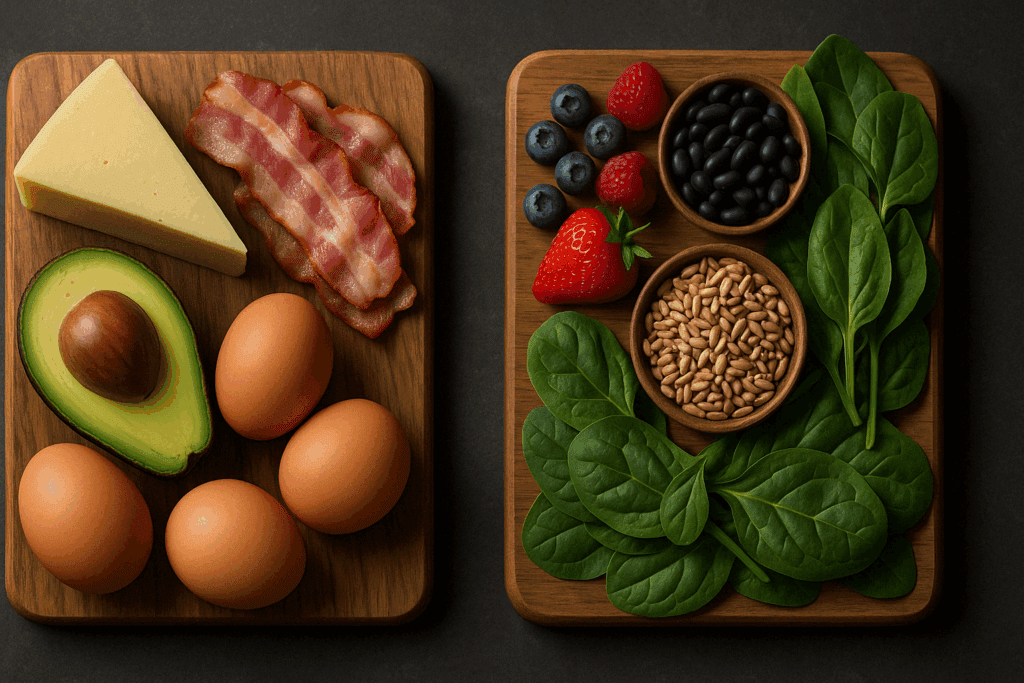
Frequently Asked Questions: Science-Backed Insights for Smart, Sustainable Weight Loss
1. What overlooked lifestyle habits can enhance a quick weight loss meal plan without changing your diet?
While diet is central, strategic lifestyle shifts can significantly amplify the results of a quick weight loss meal plan. One often-missed tactic is light exposure in the morning—natural sunlight can regulate circadian rhythms and improve metabolic function. Pairing this with a consistent eating schedule to lose weight fast helps your body anticipate meals, which may reduce stress-related fat storage. Also, incorporating short, intense movement breaks during sedentary workdays—like two-minute bodyweight squats or jumping jacks—can ignite your metabolism without disrupting your routine. These micro-adjustments complement any fast weight loss meal plan and make it more effective without added effort in the kitchen.
2. How can you lose weight fast in 2 weeks without compromising long-term metabolic health?
To answer how can you lose weight fast in 2 weeks responsibly, balance is key. Focus on preserving lean muscle mass through adequate protein intake and resistance training. Avoid crash dieting, which often causes water loss and rebound fat gain. Instead, choose an evidence-based 2 week weight loss plan that promotes a slight caloric deficit, nutrient density, and meal prep plans for losing weight to stay consistent. Adding omega-3 fats and fermented foods supports hormonal balance and gut health, both crucial for sustained fat loss. Rapid results are possible—but they’re healthiest when they’re also metabolically protective.
3. What makes a diet program psychologically easier to follow for busy professionals?
For busy individuals, the easiest diet to follow is one that reduces decision fatigue and supports automaticity. Psychological research shows that fewer daily food choices can significantly increase adherence. A well-structured 30 day meal plan for weight loss that cycles between 5–6 meal templates takes advantage of this, creating structure without monotony. Integrating convenience-oriented meal plan and prep for weight loss options—like overnight oats or sheet pan dinners—also minimizes mental load. Success often depends less on willpower and more on streamlining choices within the diet program itself.
4. What role does meal timing play in an effective body fat weight loss diet plan?
Meal timing is a powerful yet underappreciated element in a successful body fat weight loss diet plan. Intermittent fasting windows or early time-restricted feeding may enhance fat oxidation and insulin sensitivity, even without changing food choices. Aligning your eating schedule to lose weight fast with your body’s circadian biology—consuming most calories earlier in the day—can help regulate hormones like leptin and ghrelin. For those following an exercise meal plan lose weight protocol, timing carbs around workouts can further optimize performance and recovery while accelerating fat loss. It’s not just what you eat, but when you eat that can drive results.
5. What nutritional mistakes do men often make when following a diet plan for weight loss for male goals?
Men frequently overemphasize protein while neglecting fiber and micronutrients when selecting a diet plan for weight loss for male goals. This imbalance can slow digestion, increase cravings, and hinder performance. A well-rounded meal plan for weight loss male strategy should feature ample plant-based foods, which support cardiovascular health and satiety. Many men also forget the importance of hydration and meal prep plans for losing weight, both of which can prevent impulsive eating and fatigue. A smart body fat loss meal plan balances macronutrients and supports hormonal health, especially testosterone and insulin sensitivity.
6. How can a simple fat loss meal plan reduce decision fatigue and improve adherence?
A simple fat loss meal plan reduces the number of daily decisions, freeing up cognitive bandwidth. Psychology studies suggest that we make over 200 food-related decisions per day—many unconsciously. Streamlining meals into a predictable 30 day weight loss food plan helps eliminate unnecessary choices, preventing “willpower fatigue.” Smart meal plan and prep for weight loss routines, such as batch cooking grains and freezing protein portions, empower you to stay consistent even on busy days. Ultimately, simplicity isn’t just convenient—it’s psychologically empowering for long-term adherence.
7. What’s a strategic way to transition from a 2 week weight loss plan to a long-term approach?
After completing a 2 week weight loss plan, it’s crucial not to revert to old habits abruptly. Instead, scale gradually by increasing your caloric intake in small increments while maintaining the structure of your original fast weight loss meal plan. Continue prepping with meal plan and prep for weight loss techniques to stay ahead of hunger and avoid emotional eating. For ongoing progress, transition into a 3 week weight loss cycle or even a structured 30 day meal plan for weight loss, focusing on variety and micronutrient density. This gradual shift prevents rebound and supports sustainable fat loss.
8. How to lose weight day by day with minimal willpower and maximum consistency?
The key to understanding how to lose weight day by day lies in automation. Start with non-negotiable morning routines like hydration and a protein-rich breakfast from your diet program. Design a weekly meal plan and prep for weight loss so decisions are made in advance—this reduces stress and limits reliance on motivation. Use digital tools like food tracking apps and smart grocery lists tailored to your body fat loss meal plan. Over time, small victories like hitting a fiber target or completing a walk accumulate into meaningful progress, all without overwhelming your schedule.
9. Why do many easy diets to follow still fail to deliver long-term fat loss?
Even the most easy diets to follow can fall short if they ignore behavior, mindset, and environment. Many quick-fix plans neglect the role of sleep, stress, and social dynamics in appetite regulation. A weight loss 30 day diet plan that includes contingency planning—what to do when you’re traveling, tired, or triggered—adds resilience to your strategy. Further, pairing your quick weight loss meal plan with a purpose-driven goal, like improving blood pressure or energy, can deepen commitment. It’s not just about ease—it’s about systems that support you through real-life scenarios.
10. What’s the future of meal prep plans for losing weight in a tech-driven world?
The future of meal prep plans for losing weight is becoming highly personalized, thanks to AI, wearable tech, and microbiome testing. Platforms now use real-time blood glucose data and stress monitoring to suggest adjustments to your exercise meal plan lose weight program. Emerging diet apps will soon recommend tweaks to your body fat weight loss diet plan based on sleep quality and activity level. This tech integration can elevate even a simple fat loss meal plan into a precision health strategy. Expect future diet program designs to blend biofeedback with convenience for smarter, sustainable fat loss.

Conclusion: Designing the Right Quick Weight Loss Meal Plan for You
There is no one-size-fits-all solution when it comes to weight loss. But with the right strategy, a quick weight loss meal plan can be both achievable and sustainable. By focusing on whole foods, mindful meal preparation, and personalized macronutrient balance, you can create a simple fat loss meal plan that delivers real, lasting results.
Whether you follow a 2 week weight loss plan, a weight loss 30 day diet plan, or something in between, the keys to success lie in consistency, scientific guidance, and adaptability. The ongoing debate of ketogenic diet vs low carb options reflects the need for individualized approaches. Asking questions like “is keto a low carb diet” or “is keto no carbs” shows a growing awareness of the complexities of nutrition, and that awareness can empower smarter choices.
In the end, success stems not from quick fixes but from quick starts that evolve into lifelong habits. With a strong foundation, strategic planning, and evidence-based insights, you can harness the power of a fast weight loss meal plan to unlock a healthier, more vibrant version of yourself.
Was this article helpful? Don’t let it stop with you. Share it right now with someone who needs to see it—whether it’s a friend, a colleague, or your whole network. And if staying ahead on this topic matters to you, subscribe to this publication for the most up-to-date information. You’ll get the latest insights delivered straight to you—no searching, no missing out.
Further Reading:
29 Ways to Lose Weight Naturally (Backed by Science)

